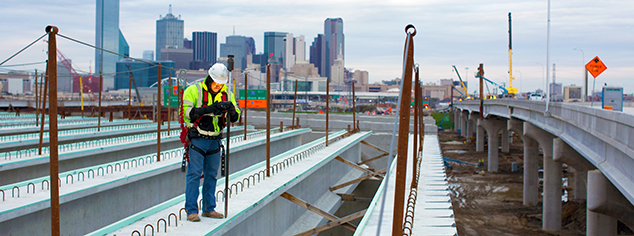ConDig (01-Oct-18). US construction expenditure continued to post gains in August as a surge in government sector spending offset drops in the residential and private segments, according to latest figures from the Commerce Department.
The figures showed that construction spending edged up 0.1% from July to August and 5.3% for the first eight months of this year compared with a year ago. This took total construction to a seasonally adjusted annual rate of $1.32 trillion, which was down 0.4% from a record high set in May.
Public sector spending rose 2% to its highest level since July 2009 amid increases for federal and state and local projects. But this rise was partially tempered by a 0.7% drop in residential construction and a 0.2% fall in nonresidential.
“Nearly all categories of construction spending continued to expand through August,” said Ken Simonson, chief economist at the Associated General Contractors of America (AGC).
“Furthermore, growth is well-balanced among public, private nonresidential and residential projects. But contractors are increasingly worried about a shortage of skilled workers.”
The largest public categories recorded year-to-date gains of 6.4% for highway construction, 1% for educational construction and 15.9% for transportation construction.
Among private nonresidential spending niches, the largest—power construction (including oil and gas field and pipeline structures)—edged up 1.1%, commercial (retail, warehouse and farm) construction rose 4.6%, office construction increased 6.5% and manufacturing construction declined 5.5%.
Within private construction, spending for residential projects increased 6.5% and 2.7% for nonresidential projects.
Growth in construction spending is a sign that recently enacted tax and regulatory reforms are helping stimulate new economic growth, according to the AGC.
But leaders of the industry continue to warn that labor shortages could undermine future demand for construction by inflating the cost of many projects.
It comes as rise in material costs has been exacerbated follow a decision by President Trump to slap a 25% tariff on imported steel and a 10% duty on foreign aluminum from Canada, Mexico and the European Union on May 31.
AGC reported in August that well over two thirds of contractors are struggling to secure craft workers as a deepening skills shortage raises costs for companies across the construction industry.
